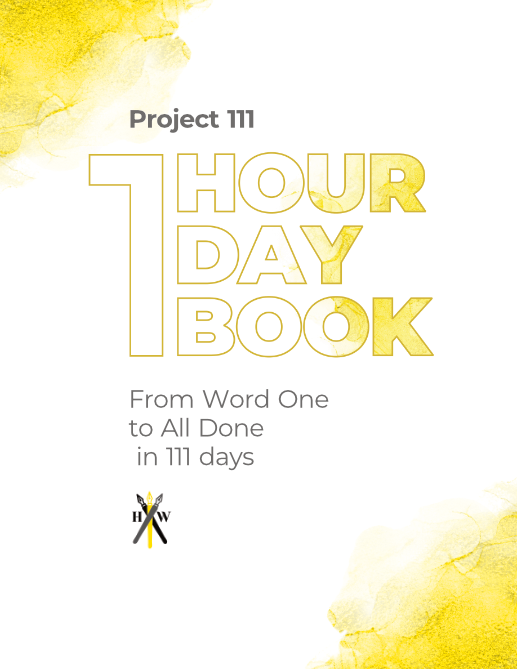Are you stuck on villain ideas for your novel? Writing a compelling and believable antagonist is an important part of crafting any great story, but it can be difficult to come up with the perfect evil mastermind. Don’t worry – we have some tips that will help get those creative juices flowing! From creating backstories to story-blocking the climatic showdown of good vs. evil, these steps are sure to give you plenty of villain ideas. Now let’s get scheming! *maniacal laugh*
Table of Contents:
- The Backstory
- The Maniacal Plot
- An Unforgettable Villain
- The Final Showdown
- More Villain Tropes to Inspire You
- Conclusion

Our 84-page book planner and 111 day writing course.
The Backstory
Your story may begin well after the villain has taken on their frightening form. The first step to a quality antagonist is determining how they got to where they are.
Motives
Every villain needs a reason for their actions. It could be something as simple as craving power or revenge; it could be a quest for justice in an unjust world. Whatever the motivation, it should be clear to readers why the villain is doing what they’re doing – whether revealed early on or progressively throughout the story.
Examples of motivations include wealth, fame, love, control over others, misguided altruism, etc.
Personality Traits
Villains need to have some distinct personality traits that make them stand out from other characters in your story. This can range from overconfidence to deep-seated insecurities; the point is to make them unique and memorable to readers. List out their strengths and flaws alike, then consider how each will lead to successes and failures in their maniacal goals. Dr. Doofenshmirtz in Phineas and Ferb may be doomed to overconfidence in each of his “-inators,” but his tenacity and determination to rule the Tri-State area bring back Perry the Platypus again and again.
Examples of flaws include arrogance, impulsiveness, short-sightedness, etc.
Relationships with Other Characters
A great way to create depth for your villain is by exploring how they interact with other characters in your story – both those who oppose them and those who support them (if any). Maybe their manipulative nature shines in a seemingly loving embrace. Consider if their sidekick is there out of love, fear, or both. Think about Scar in The Lion King calling his own hyena henchman “idiots” vs Ursala in The Little Mermaid mourning the loss of her “poor little poopsies.” Showing how the villain interacts with different characters can reveal things that may not come across amidst plotting evil deeds.
The Maniacal Plot
Once a plausible backstory is established, it’s time for the action. How will they do what they gotta do?
Plotting the Scheme
A villain’s plan of attack should be carefully thought out and well crafted. It should have a clear goal, with steps that lead to it. Think about what your villain’s ultimate objective and what must happen for it to be realized. Consider their resources, skills, and abilities. For example, if your villain is a mythical creature or genetically altered monster, they will be relying on magic powers and/or brute force to get the job done. If they are a gentlemanly millionaire, their best bet might be to hire someone else to do the dirty work, until they swoop in and steal the glory in the end.
Sidekicks and Allies
Speaking of millionaires hiring cronies, enlisting allies is a fantastic way to support your villain. These allies can provide additional resources or manpower for carrying out the plan. They may also act as distractions or obstacles for the hero/protagonist while the villain carries out their scheme in secret. When creating allies for your villain, consider who would be willing to help them achieve their goals and why they would do so – Money? Power? Revenge? Love? Snacks?
Anticipating Opposition
Anticipating reactions from heroes/protagonists is key when crafting a successful plan of attack for any good villain. Think about how your protagonist will react when faced with the dastardly plot – what kind of strategies might they employ against it? How could you make sure that these strategies don’t initially work? By anticipating reactions from heroes/protagonists and other characters, villains can stay one step ahead — at least until the end!
An Unforgettable Villain
As you craft the antagonist’s backstory and evil schemes, be sure to give him that je ne sais quoi of villainry. Unique characteristics and quirks will make them stand out from the crowd at the next Evil Con.
The Look
Creating an iconic look for your villain is also important. Think about what kind of clothing they would wear that reflects their personality and goals – perhaps something dark and sinister? Or flip the script with a pastel pink sequined number! It’s also worth considering any physical features that will make them instantly recognizable, like wild hair, facial scars, or menacing tattoos. The Joker’s creepy makeup, Voldemort’s lack of nose, and Regina George’s pink Wednesdays are icons associated with the characters. What feature or physical trait could represent your villain?
Also, consider mannerisms. Do they talk quickly or slowly? Are there certain words/phrases that always seem to pop up whenever this character speaks? These small details can really bring a character alive on the page. Remember Barty Crouch Jr.’s weird tongue twitch in the movie adaptation of Harry Potter and the Goblet of Fire? Not only did it make him super creepy, but also gave him away when impersonating Mad-Eye Moody. All these details add up to create a vivid image for readers and can even be used as plot progressors and foreshadowing techniques. So don’t neglect the physical appearance and habits when creating your villain’s iconic look!
The Catchphrase
Developing a catchphrase or tagline for your villain could help readers remember them long after the story has ended. This could reflect their character traits and motivations in some way – think of classic villains like Darth Vader (“I find your lack of faith disturbing”) or The Joker (“Why so serious?”). This memorable statement could be repeated throughout the story or delivered at a token moment. Find something witty yet menacing or thought-provoking and ominous. Think about the tone of your narrative and ensure it matches, if you chose to use one.

Writing a Satisfying Showdown Between Hero and Villain
A captivating and gratifying battle between the hero and villain is essential for any story, as it brings the narrative arc to its climax. To craft an exciting showdown between hero and villain that keeps readers engaged, there are key elements to consider.
Building Tension
When writing a satisfying showdown, it’s important to build tension through conflict. This can be done via verbal squabble, physical combat, and/or a test of wits. What obstacles must be overcome before the final confrontation can take place? What last-minute hurdles will the villain introduce? Will there be any snags in the hero’s plan and why will it be that the love interest is captured?
Going into the final battle, all odds are against your hero. They still need a plan or a secret weapon or a heart full of hope, but the villain definitely has everything in place to succeed. As the conflict progresses, the tides will twist and turn. Remember that the hero’s darkest moment will be the villain’s brightest. Your villain needs a big win where the protagonist can rise from the ashes in a final spur of courage. Make this moment where the stakes have never been higher. Your villain has stolen the powers, shown his uncanny ability to predict the hero’s plan, taken what matters most to the hero… But then use the villain’s fatal flaw to bring it all down. In this moment, the stakes have never been higher and your reader is on the edge of their seat!
Victory and Defeat
As you design that turning point from the villain’s success to the hero’s, ponder all the possibilities. What victories and defeats could each character face? For the wins, what does this mean for the character? How do they feel about their success? Does it solve the problem as expected? Did everything get solved or is there more to address? (I think I smell an epic trilogy in the works!) For the defeats, how does this affect the overall goals? Does this provide a better resolution than if they had won? Is all hope lost or does this renew their resolve? Exploring these questions will create meaningful consequences for the villain and the hero.
More Villain Tropes to Inspire You!
If you’re still feeling stuck, peruse these generic ideas to get those gears turning.
Villian Profiles
- A mysterious figure who has been manipulating events from behind the scenes
- An evil genius with a powerful weapon or new technology
- A corrupt politician whose ambition threatens to destroy society
- A charismatic cult leader whose followers will do anything for them
- An immortal being with supernatural powers that make them seemingly unstoppable
Villian Motives
- Greed drives many villains to accumulate wealth and riches at any cost – even if it means destroying innocent lives in the process.
- Power over others, either through force or manipulation, so they can achieve their own goals without interference from anyone else.
- Take control of the world and become its sole ruler.
- Seek revenge against those who have wronged them, whether it be a personal vendetta or retribution for an injustice done to their people or cause.
- Causing chaos and destruction just because they can, with no greater purpose than that of pure entertainment for themselves.
Conclusion
It’s important to remember that villains are more than just obstacles for your hero. They should be fully fleshed-out characters with their own motivations and desires. By using these villain ideas as a starting point, you can create an unforgettable antagonist who will make your story truly memorable. With the right amount of creativity and planning, both hero and villain have something to gain or lose in the end.
Now that you’ve got your villain figured out, how’s the rest of the book going? Check out our Project 111 – a course and book planner to help you plan and write a novel in just 111 days! Complete with character creation worksheets to help you plan out heroes and villains alike!*
*Evil weaponry, maniacal laughter, and general disrespect for human life not included.
Reed Smith
Reed is the founder and builder of Habit Writing and enjoys all things writing. He loves learning about the craft of storytelling, writing messy drafts, and playing board games with his wife, friends, and family.
Our 84-page book planner and 111 day writing course.



